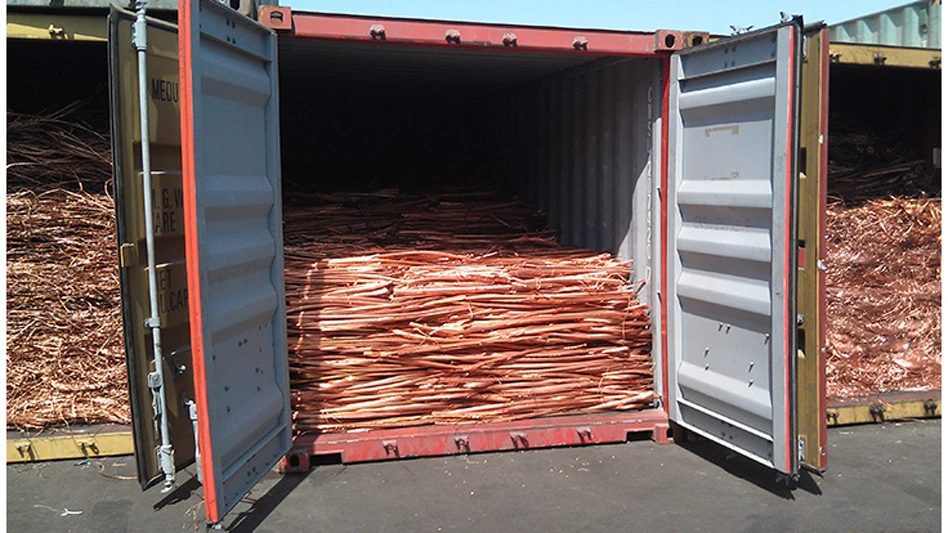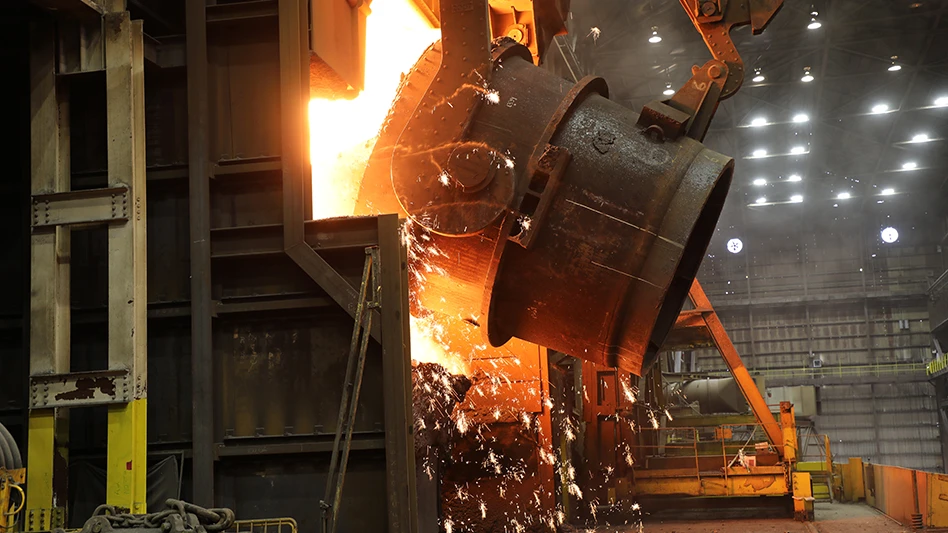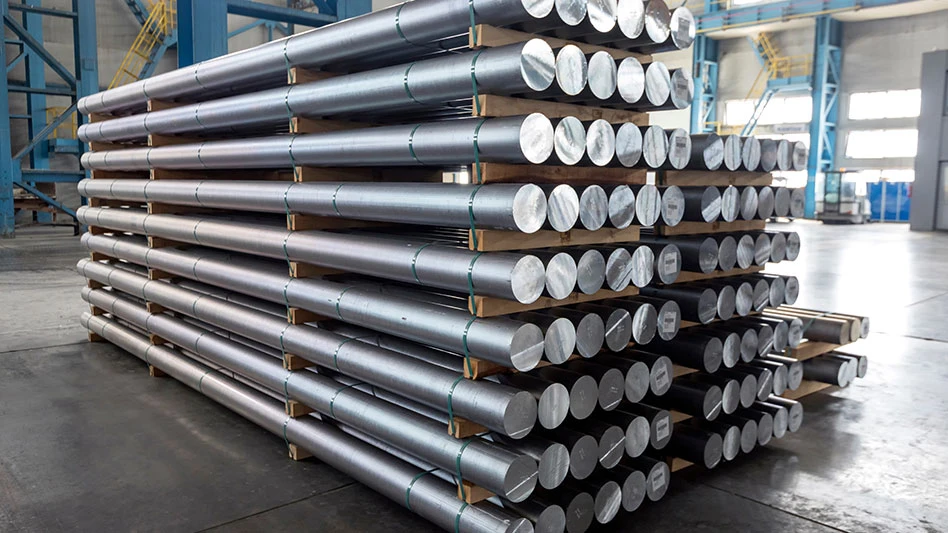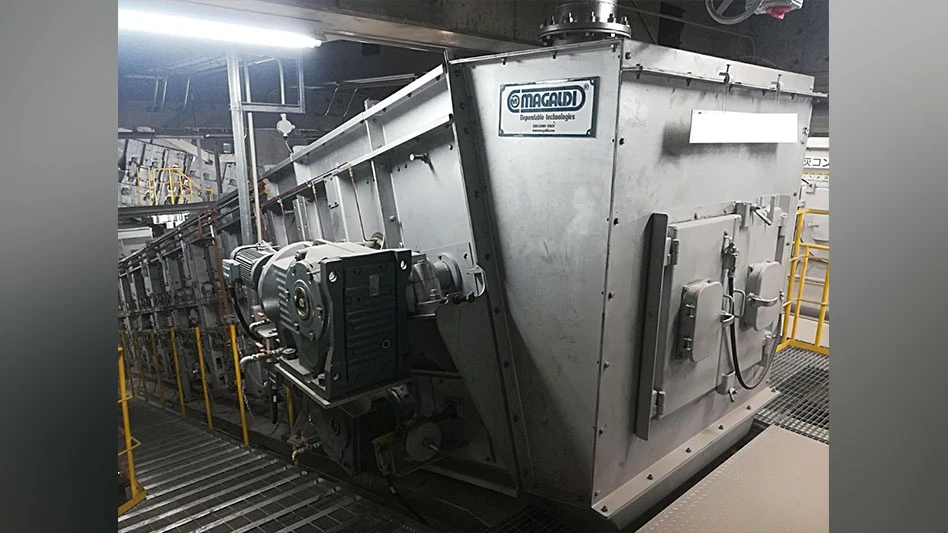 As processors aim to collect and recycle more materials, equipment manufacturers are analysing and introducing advanced machines and technologies to handle this diverse mix.
As processors aim to collect and recycle more materials, equipment manufacturers are analysing and introducing advanced machines and technologies to handle this diverse mix.
Of the incoming material stream, black plastics are among the most complicated materials to sort, several suppliers say. While a majority of recyclers are not separating black plastics from other mixed plastics destined for recycling, those who are have been doing so successfully—and with markets to sell to.
To cater to these recyclers, some manufacturers, such as Green Machine, based in the United States, are beginning to tackle this issue, while others, including Hamos GmbH, headquartered in Penzberg, Germany, have been manufacturing equipment designed to separate black plastics for more than a decade.
Plastics have in recent years been sorted by optical scanners, using camera systems that employ near-infrared (NIR) technology to analyze reflected light to identify polymers and to sort material by color. X-ray fluorescence technology also is used to sort mixed plastics by analysing their molecular structure, enabling sortation by density as well as by additives, removing brominated plastics, for example.
Optical sorting equipment can distinguish the differences among polymers such as PS (polystyrene), ABS (acrylonitrile butadiene styrene), PC (polycarbonate), PPO (polyphenylene oxide), PP (polypropylene), PE (polyethylene) and PVC (polyvinyl chloride).
However, because black doesn’t reflect light, black plastics cannot be sorted by scanners using NIR technology, says John Green, president of Green Machine.
As a result, equipment manufacturers have developed a number of new processes to sort black plastics. Even so, a number of suppliers are still in the inception stage of the process, while others are straying away from this practice.
“All suppliers of sorting equipment grapple with the challenges of black plastics,” says Christopher Simon, vice president of Redwave Solutions US, a subsidiary of Redwave, an Austrian-based supplier of sensor-based sorting equipment. Redwave is “developing systems to tackle this issue,” Simon says of sorting black plastics.
The reasons why processors have apparently shied away from sorting plastics of this color are reasonable: Felix Hottenstein, sales director for optical sorting equipment manufacturer MSS Inc., Nashville, Tennessee, declares, “The promising technologies to sort black plastics are still either slow, work only for larger particles or are very expensive.”
Alex Wolf, sales engineer for Titech, a division of sensor-based sorting system designer and manufacturer Tomra Sorting Solutions, based in Norway, comments, “For more complex material mixtures, [sorting black plastics] remains a technical and economically difficult task.”
Wolf continues, “Sorting groups of polymers together is certainly possible under the right conditions, but a complete solution still remains to be developed.”
Tough technology
At Green Machine, owner Green says the company just recently completed research and development work for sorting black plastics with its Green Eye optical sorting system and its patent-pending technology, which looks at materials three-dimensionally and at a molecular level. The high-speed processor is capable of collecting information at conveyor belt speeds of up to 900 feet per minute, and because it looks at the materials on the molecular level, Green says, the black plastics don’t blend in with the conveyor belt of the same color.
“Green Eye optical sorters provide positively sorted grades of black plastics,” Green asserts. “We are in the process right now of deploying machines to separate black plastics.”
Green says the company began work on sorting black plastics after customers requested the removal of black ABS plastics from auto shredder residue (ASR). Green Machine has since secured 90% pick rates for black plastics, Green says.
“We have been able to sort that material while ignoring other black materials, such as rubber. We are taking black ABS plastics and other black plastics and successfully sorting it on our optics,” he adds.
While the Green Eye sorts plastics by color and polymer, Green says processors who sort only by color should reconsider.
He explains, “Black plastics can consist of lower grade plastics and higher grade plastics ... Selecting by polymer and color is what the industry needs.”
MBA Polymers, a plastics recycling company headquartered in the United Kingdom, developed proprietary technology in-house for separating black plastics, says Paul Mayhew, global sourcing manager for the company. MBA Polymers processes WEEE (waste electrical and electronic equipment) plastic, ASR and mixed rigid plastics from municipal sources and is forecasting it will handle close to 150,000 tonnes of material this year, he says.
MBA operates three facilities—in Austria, China and the U.K.—each of which is able to process, clean and sort black plastics that are then sent to extruders to be formed into high-quality pellets and then sold back into the industry, Mayhew says.
“We’re taking the black plastics to the final stage of recycling, to the pellet, to be sold back into the industry,” Mayhew states. “It’s a frontier of recycling to be conquered, but we have developed technology that allows us to recycle the most complex plastic waste streams, which include black plastic,” he adds.
 Mayhew says MBA spent two decades developing its latest technology that allows the company to sort black plastics; the company took techniques from other industries, including agriculture and mining, to learn how to properly sort these materials.
Mayhew says MBA spent two decades developing its latest technology that allows the company to sort black plastics; the company took techniques from other industries, including agriculture and mining, to learn how to properly sort these materials.
MBA’s postconsumer black pellets are sold to companies to be used in electronics, appliances, consumer products, building construction and automotive components.
“What we’ve proven at MBA is that with the right partner and feedstocks, you can successfully close the loop and create a truly circular economy,” Mayhew says.
He continues, “There’s a huge market out there for postconsumer black plastics.”
Demand drivers
Several in the industry, however, do not see markets for recycled black plastics in such a positive light. MSS Inc.’s Hottenstein says, “Currently, markets, even for nonblack sorted engineering plastics, seem to be limited due to the high quality demands by the end users.
“Also, integrating an expensive piece of equipment just to add a potentially marginal additional value could be questionable,” Hottenstein continues. “One way this could have a higher chance of success is if legislation would demand for certain percentage of black plastics to be recovered.”
He speaks along the same lines as MBA’s Mayhew, who stresses, “There needs to be more drivers on the legislation side of using recycled materials, really closing the loop. You need investment—nothing is cheap— but you also need to have the end markets ready to take the final product. For the industry to take off, you need those drivers in place to incentivize manufacturers to buy the recycled resins,” Mayhew adds.
Green points out that by sorting black plastics, they can be more readily recycled into new products of the same color type.
“The absence of a system’s ability to identify black plastics has relegated that material to end up mixed in with nonrecyclable plastics, whereas the value to segregate different grades of black plastics carries a much higher value and can be more readily recycled into high-value products,” Green says.
Simon says Redwave and much of the industry are still in research stages of processing black plastics. “Key figures of investment costs of systems versus value gained by different black polymer fractions have not been established yet,” he says.
WEEE works
When it comes to sorting plastics from WEEE, recyclers have used NIR technology as well as density separation methods. Electrostatic separation is another route.
Dr. Ranier Kohnlechner, managing director and owner of Hamos GmbH, says his company has been manufacturing electrostatic equipment to separate black plastics for more than a decade. The company’s EKS separators take 748 kilograms per hour of mixed materials and separate them into clean, single polymer fractions, Kohnlechner says.
Hamos’ machine is capable of separating black PS/ABS mixtures from WEEE or toner cartridges, rubber sealing from PVC windows, shrink labels and other impurities from PET (polyethylene terephthalate) bottles and cable as well as ASR and other materials, Kohnlechner says.
“Sorting and recycling of completely black plastics is no problem,” he adds. Kohnlechner says black plastics now comprise from 60% to 80% of WEEE material. To separate them, electrostatic separators operate on the premise that mixed plastics take on different electrical charges depending on type, Kohnlechner explains.
As electrostatic separators can only separate positively or negatively charged plastic particles from each other, a mixture consisting of two plastics is ideal, Kohnlechner points out. Such mixtures are obtained, for example, by a separation process installed before electrostatic separation, such as separation by density.
Kohnlechner says the company’s Wersag facility near Dresden, Germany, which uses a combination of wet (sink-float) and dry (electrostatic) technologies, has been producing clean, high-grade PS (of up to 98.5% purity) and ABS (of up to 99% purity) from WEEE, particularly small household appliances, computers and photocopiers. Working in three shifts, the Wersag facility processes around 10,000 tonnes of WEEE plastics each year, he says.
The WEEE recyclers that use Hamos’ electrostatic separation equipment and that have installed complete plants, Kohnlechner says, “do not have any problems selling black-colored PS and ABS.
“This market for recycled ABS or PS from WEEE is continuously growing,” he adds.
The ABS and PS regrind, which Wersag produces in less-than-three-eighths-inch size, is reused for production of new equipment, says Kohnlechner.
The author is an associate editor with the Recycling Today Media Group and can be contacted at mworkman@gie.net.
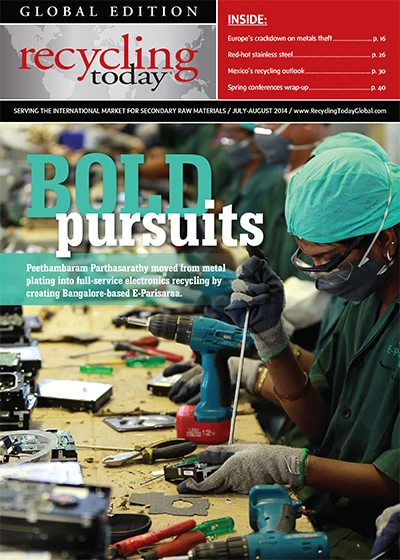
Explore the July 2014 Issue
Check out more from this issue and find your next story to read.
Latest from Recycling Today
- Pettibone adds new model to telehandler line
- ICIS: One chemical recycling technique experiences pitfalls
- American Beverage marks 5-year anniversary of Every Bottle Back
- Prism Worldwide raises $40M in Series A, A1 funding
- Trademark Metals Recycling opens new Florida facility
- Amcor to acquire Berry Global in $8.43B all-stock transaction
- Crown qualifies coils produced at Constellium’s new recycling center
- Ecore receives investment from low-carbon fund
